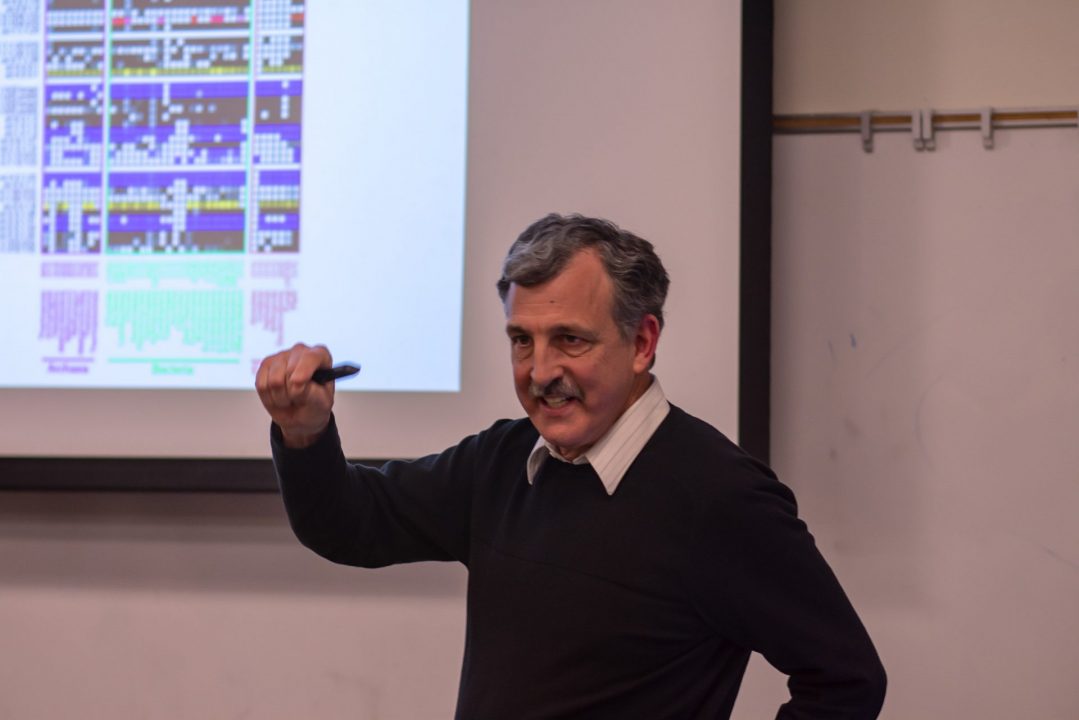The student organization CRU sponsored senior mechanical engineer and part-time lecturer Mark Lamontia to speak about how life began in the universe. The engineer examined various schools of thought and explained the facts behind them.
Lamontia was raised with a religious background. His religious beliefs shaped his view on the origin of life until he asked, “How did life begin in the first place? How does science know how it began?”
The engineer graduated from Ohio State University in 1979. He pursued scientific research to seek the answer to the origin of life.
Lamontia referred to the ongoing science versus religion controversy. He said, “I think it is more important to have your own thoughts and to find your own answers. There are a lot of evolutionists, naturalists or atheists who have their own ideas about how life started.”
Biology sophomore Andrew Simpson believed that life would not have existed without an intelligent designer. “When I see nature, I see beauty and I also see how complex life is. I think the absolute complexity begs a designer.”
Simpson heard various debates about how life likely began. “When people talk about the origin of life, it should not be about science versus religion or whether God or science created it or not,” he said. “I want to make sure that the answer [to how life began] is objectively real.”
Lamontia explained several scientific definitions and hypotheses. He said, “In Oparin’s hypothesis, you have a sea and you have extremely reactive compounds like methane, amino acids and hydrogen. We’ll blast this biotic soup with lightning and see what happens.”
He also said that Oparin’s hypothesis “was more of a theory,” and that there “wasn’t much [feasibility] behind it until the early 1950s when American chemist Stanley Miller invented the Miller Volcanic Spark Discharge Experiment.”
The experiment inspired researchers to find a way to recreate living cells in laboratories. “Stanley Miller showed that life could be simple and made inside of a tube,” Lamontia said. “However, it wasn’t simple and there were several errors. Early Earth was not full of the reactive compounds that began life. The [Miller] experiment produced a lot of brown goo and maybe a few amino acids.”
The engineer spoke about the likelihood of producing a viable living cell. “Creating one cell by random chance would take the equivalence of winning the lottery 250 times all at the same time.”
He also explained the lack of chemical reactions in DNA. “There is no chemistry in the DNA molecule. Chemistry cannot create information inside DNA.”
Lamontia included video clips and sound bites of cell creation, the monkey typewriter theorem and quotations from scientists and researchers. The monkey typewriter theorem proposes that “if there were an infinite amount of monkeys, an infinite amount of typewriters and an infinite amount of time, the monkey would almost surely type a given text, such as the works of William Shakespeare.”
He also showed monkey writing samples that the Paignton zoo produced after testing the theorem. “Five pages of text were filled with the letter S,” He said. Eventually, they were more creative and used letters such as A, J, L and M, but there was no sign of human language.”
“There will never be an explanation for the beginning of life by science,” Lamontia said. “Even if you have everything set up for life, there still has to be a designer to get it started.”

